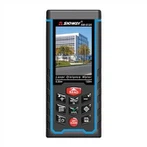Difference Between Stereo Microscope and Metallographic Microscope
What is the difference between a stereo microscope and a metallographic microscope? The following will be explained in detail by Shanghai Bajiu technicians:
1. Lighting light path system
1. Metallographic microscopes generally have a special reflected light illumination path (because the observed sample is opaque), and the illumination light passes through the semi-reflective lens and then irradiates the surface of the sample through the objective lens. The image is imaged in the eye, so the objective lens replaces the role of the condenser in the Kohler illumination system. In principle, this kind of illumination belongs to coaxial illumination, that is, the illumination light and the reflected light are in the same main light path.
2. Stereo microscopes generally use external light sources, such as lateral halogen lamps for oblique illumination, and ring LED lamps for illumination, but these illumination methods are not coaxial illumination. A certain angle, in principle, is somewhat similar to the dark field illumination of a metallographic microscope. In addition, some stereo microscopes also have coaxial illumination light sources, but the coaxial illumination of stereo microscopes has certain limitations. If the design is improper, glare will be generated, which requires special accessories or lenses to be eliminated.
Second, the magnification
1. The magnification of the metallographic microscope objective lens is above 1.25 times and below 100 times, and the magnification of the eyepiece is between 10X and 20X. Therefore, the total magnification of the metallographic microscope is between 12.5X and 2000 times.
2. The magnification of the stereo microscope is quite different. If it is a stereo microscope for ordinary inspection, the magnification is generally between 0.5 times and 100 times. If it is a research-level microscope, while improving the optical quality, the magnification will also be Increase to about 200 times to 400 times.
3. Rack and focusing mechanism
1. The metallographic microscope frame is generally relatively large, but because the metallographic microscope is used for high-power inspection, the size of the sample it can place is generally relatively small, and the surface of the sample is generally required to be relatively flat, and the sample needs to be polished, polished and corroded. Except for the inverted metallographic microscope at this point, although sample preparation is also required, it has almost no restrictions on the size of the sample. A good inverted metallurgical microscope can place a sample weighing about 10 kilograms. In addition, the focusing mechanism of the upright metallographic microscope is a lifting stage (there are also a few upright microscopes and measuring microscopes that use special accessories to lift the objective lens), and the inverted metallographic focusing mechanism is the lifting objective lens.
2. The frame size of the stereo microscope is generally relatively small, but if it is matched with a large-sized mobile frame, it can inspect samples of different sizes, including direct inspection of products on the production line, so it has very low requirements for samples and does not Special sample preparation is required, as long as the sample preparation surface is roughly flat. Because the stereoscopic mirror is relatively light, the focusing method of the stereoscopic microscope is generally to lift the entire optical path host.






